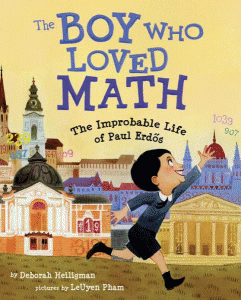
I asked you to tell me at every step if you don’t understand something. You said nothing!
In honor of Paul Erdős’s 100th birthday (March 26), I wanted to share one of my favorite stories involving his attempt to prove the irrationality of the square root of 2 to a non-mathematician.
Now, before we get to the story, a quick mathematical refresher. Remember that the proof uses the popular technique of “proof by contradiction” or “Reductio ad Absurdum“. (For example, if you are trying to prove some claim “A” true, first assume instead that “the opposite of A” is true. Then, show that the new assumption leads to some logical contradiction. This contradiction means that “the opposite of A” is wrong and “A” must be true after all. Tricky, isn’t it?) I love how G.H. Hardy explains it, “it is one of a mathematician’s finest weapons. It is a far finer gambit than any chess gambit: a chess player may offer the sacrifice of a pawn or even a piece, but a mathematician offers the game.”
(Still need a little more of a refresher with the proof? Click here. Don’t worry if you’re not a great mathematician – it doesn’t require a lot of math to understand it. In fact, that’s what makes it so beautiful – or “from the book” as Erdős would say!)
Now, on to the story …
One afternoon, Erdős was visiting with his life-long friend and fellow mathematician Andrew Vazsonyi. (This is the same friend who many years ago told Erdős that he was thinking of majoring in something other than mathematics. Erdős responded by saying that if he chose that path, “I’ll hide, and when you enter the gate of the Technical University, I will shoot you!”) Anyway, Erdős decided to explain the magic of mathematics to Vazsonyi’s non-mathematican wife, Laura, by proving the irrationality of the square root of 2. Unfortunately for Erdős, things didn’t go according to plan! As Vazsonyi tells the story:
One day, Erdos got reckless and told Laura, my wife, that he will prove to her the Pythagorean “scandal,” that the square root of 2 is irrational. (According to legend, the disciple of Pythagoras, who revealed the secret to laymen, was put to death.) He started with an almost blank sheet and started the proof . “Laura, if you do not understand a step, let me know, so I will clarify the proof,” he said. Let us assume that the square root of 2 is rational, that is it equals a/b, where a and b are whole numbers. “OK?,” Laura agreed. Then he went down, step-by-step and reached a contradiction. “See, the assumption is wrong, the square root of 2 cannot be rational.”
But Laura did not like the proof. Erdos got annoyed. “I asked you to tell me at every step if you don’t understand something. You said nothing.”
“Why didn’t you tell me at the beginning that this is all wrong?” said Laura. Erdos flipped his top.
I recalled that when Albert Einstein gave one of his last talks, at the end they unscrewed the black board and sent it to the Smithsonian. So I asked Erdos to certify the document, so I could keep it for history. He signed his name and p g o m a. d, signifying Poor Great Old Man Archeological Discovery. At age 70 he started to use LD for Legally Dead, and at 75 CD for Count Dead, for reasons unknown to me.
Here is the actual “document” from that day:

Beautiful, isn’t it. Happy 100th, Paul! Thanks for all the great memories – and, of course, mathematics!
If you are looking to read a little more about Erdős, you can read any of these:
Here are the sources for this post::




